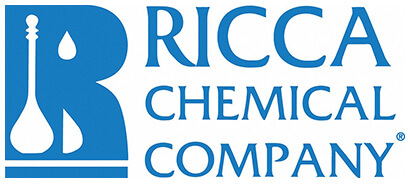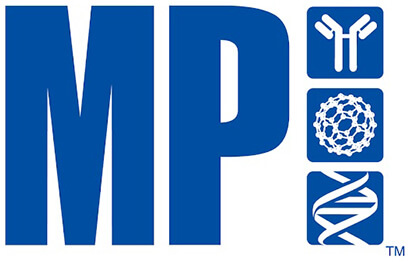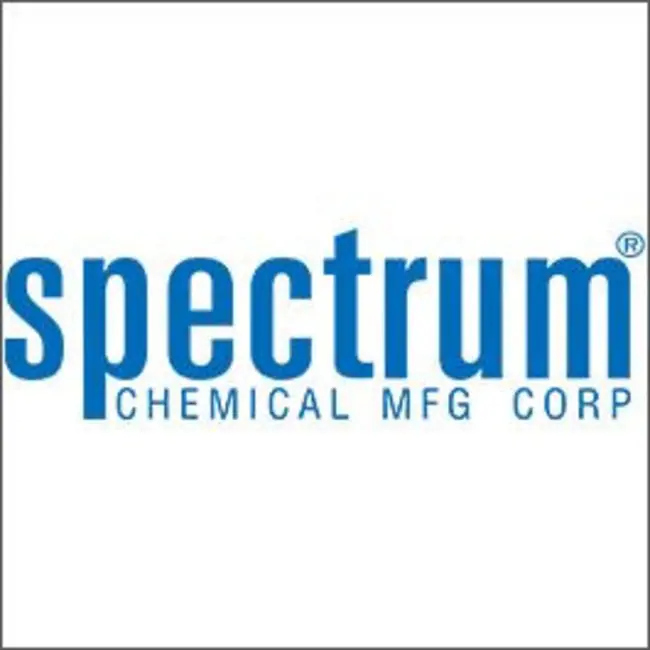Ambient
Showing 132251–132300 of 146505 results
-

Shikimic Acid Ethyl Ester
$695.18 Add to cart View Product DetailsMolecular Formula : C9H14O5
-
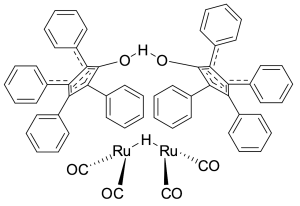
Shvo’s Catalyst
$55.20 Add to cart View Product DetailsMolecular Formula : C62H42O6Ru2
-

Shvo’s Catalyst
$187.16 Add to cart View Product DetailsMolecular Formula : C62H42O6Ru2
-

Shvo’s Catalyst
$336.38 Add to cart View Product DetailsMolecular Formula : C62H42O6Ru2
-
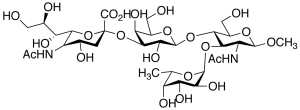
Sialyl Lewis X, Methyl Glycoside
$116.44 Add to cart View Product DetailsMolecular Formula : C32 H54 N2 O23
-

Sialyl Lewis X, Methyl Glycoside
$1,254.08 Add to cart View Product DetailsMolecular Formula : C32 H54 N2 O23
-

SIB 1553A Hyrdrochloride
$149.21 Add to cart View Product DetailsMolecular Formula : C13H19NOS • HCl
-

SIB 1553A Hyrdrochloride
$694.31 Add to cart View Product DetailsMolecular Formula : C13H19NOS • HCl
-

SIB 1553A Hyrdrochloride
$1,242.86 Add to cart View Product DetailsMolecular Formula : C13H19NOS • HCl
-
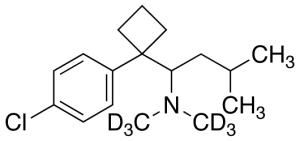
Sibutramine-d6
$266.51 Add to cart View Product DetailsMolecular Formula : C17 2H6 H20 Cl N
-

Sibutramine-d6
$2,069.14 Add to cart View Product DetailsMolecular Formula : C17 2H6 H20 Cl N
-

Sibutramine, Hydrochloride Monohydrate
$163.01 Add to cart View Product DetailsMolecular Formula : C17 H26 Cl N . Cl H . H2 O
-

Sibutramine, Hydrochloride Monohydrate
$204.41 Add to cart View Product DetailsMolecular Formula : C17 H26 Cl N . Cl H . H2 O
-

Sibutramine, Hydrochloride Monohydrate
$1,640.48 Add to cart View Product DetailsMolecular Formula : C17 H26 Cl N . Cl H . H2 O
-

Siglec-10 Fc Chimera, Human
$1,293.75 Add to cart View Product DetailsSiglec-10 is immune system-restricted and highly expressed in peripheral blood leukocytes. Siglec-10 preferably binds to α-2,3- or α-2,6-linked sialic acid (similarity). Siglec10 is involved in the negative regulation of B cell antigen receptor signal transduction. The inhibition of B cell activation depends on PTPN6/SHP-1 (by similarity). The binding of Siglec10 to CD24 may be involved in the selective suppression of the immune response (by similarity) to risk-related molecular patterns (DAMPs) (such as HMGB1, HSP70 and HSP90). The combination of Siglec10 and CD24 may regulate the immune response of natural killer (NK) cells. Play a role in controlling autoimmunity (by similarity). In the process of initiating an adaptive immune response by CD8-α+ dendritic cells, cross-presentation is inhibited by weakening the formation of MHC class I peptide complexes. The function seems to imply the recruitment of PTPN6/SHP-1, which dephosphorylates NCF1 of the NADPH oxidase complex, thereby promoting phagosome acidification (by similarity).
-

Siglec-10 Fc Chimera, Human
$189.75 Add to cart View Product DetailsSiglec-10 is immune system-restricted and highly expressed in peripheral blood leukocytes. Siglec-10 preferably binds to α-2,3- or α-2,6-linked sialic acid (similarity). Siglec10 is involved in the negative regulation of B cell antigen receptor signal transduction. The inhibition of B cell activation depends on PTPN6/SHP-1 (by similarity). The binding of Siglec10 to CD24 may be involved in the selective suppression of the immune response (by similarity) to risk-related molecular patterns (DAMPs) (such as HMGB1, HSP70 and HSP90). The combination of Siglec10 and CD24 may regulate the immune response of natural killer (NK) cells. Play a role in controlling autoimmunity (by similarity). In the process of initiating an adaptive immune response by CD8-α+ dendritic cells, cross-presentation is inhibited by weakening the formation of MHC class I peptide complexes. The function seems to imply the recruitment of PTPN6/SHP-1, which dephosphorylates NCF1 of the NADPH oxidase complex, thereby promoting phagosome acidification (by similarity).
-

Siglec-10 Fc Chimera, Human
$137.14 Add to cart View Product DetailsSiglec-10 is immune system-restricted and highly expressed in peripheral blood leukocytes. Siglec-10 preferably binds to α-2,3- or α-2,6-linked sialic acid (similarity). Siglec10 is involved in the negative regulation of B cell antigen receptor signal transduction. The inhibition of B cell activation depends on PTPN6/SHP-1 (by similarity). The binding of Siglec10 to CD24 may be involved in the selective suppression of the immune response (by similarity) to risk-related molecular patterns (DAMPs) (such as HMGB1, HSP70 and HSP90). The combination of Siglec10 and CD24 may regulate the immune response of natural killer (NK) cells. Play a role in controlling autoimmunity (by similarity). In the process of initiating an adaptive immune response by CD8-α+ dendritic cells, cross-presentation is inhibited by weakening the formation of MHC class I peptide complexes. The function seems to imply the recruitment of PTPN6/SHP-1, which dephosphorylates NCF1 of the NADPH oxidase complex, thereby promoting phagosome acidification (by similarity).
-
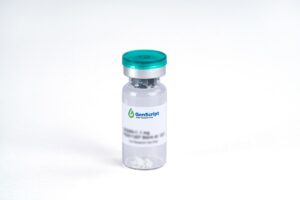
Siglec-15 Fc Chimera, Human
$1,293.75 Add to cart View Product DetailsSiglec-15 preferentially recognizes the Neu5Acalpha2-6GalNAcalpha- structure. Siglec-15 associates with the activating adaptor proteins DNAX activation protein (DAP)12 and DAP10 via its lysine residue in the transmembrane domain. Siglec-15 is the second human Siglec identified to have an activating signaling potential; unlike Siglec-14, however, it does not have an inhibitory counterpart.
-
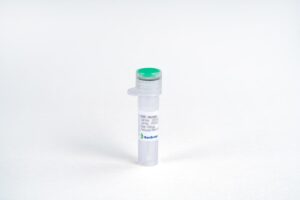
Siglec-15 Fc Chimera, Human
$189.75 Add to cart View Product DetailsSiglec-15 preferentially recognizes the Neu5Acalpha2-6GalNAcalpha- structure. Siglec-15 associates with the activating adaptor proteins DNAX activation protein (DAP)12 and DAP10 via its lysine residue in the transmembrane domain. Siglec-15 is the second human Siglec identified to have an activating signaling potential; unlike Siglec-14, however, it does not have an inhibitory counterpart.
-

Siglec-15 Fc Chimera, Human
$137.14 Add to cart View Product DetailsSiglec-15 preferentially recognizes the Neu5Acalpha2-6GalNAcalpha- structure. Siglec-15 associates with the activating adaptor proteins DNAX activation protein (DAP)12 and DAP10 via its lysine residue in the transmembrane domain. Siglec-15 is the second human Siglec identified to have an activating signaling potential; unlike Siglec-14, however, it does not have an inhibitory counterpart.
-

Siglec-2/CD22, hFc, Human
$189.75 Add to cart View Product DetailsCD22, or cluster of differentiation-22, is a molecule belonging to the SIGLEC family of lectins. It is found on the surface of mature B cells and to a lesser extent on some immature B cells. CD22 a member of the immunoglobulin superfamily. CD22 functions as an inhibitory receptor for B cell receptor (BCR) signaling. It is also involved in the B cell trafficking to Peyer’s patches in mice.
-

sIL-6Rα, His, Human
$1,470.56 Add to cart View Product DetailsInterleukin-6 Receptor (IL-6R) is a single trans-membrane protein that is the receptor for Interleukin-6 (IL-6). IL-6R forms a hexameric complex upon binding 2 molecules of IL-6 and two molecules of glycoprotein 130 (gp130) which activates intracellular JAK/STAT pathways. Although the normal form of IL-6R is the membrane-bound 80 kDa subunit, a soluble form of IL-6R (sIL-6R) can be generated physiologically by limited proteolysis or alternative splicing. sIL-6R binds to both IL-6 and gp130 generating intracellular signaling. In the immune system, sIL-6R is produced by both naïve and memory CD4 T-cells and strongly augments IL-6 ligand’s induction of Th-17 cells.
-

sIL-6Rα, His, Human
$51.75 Add to cart View Product DetailsInterleukin-6 Receptor (IL-6R) is a single trans-membrane protein that is the receptor for Interleukin-6 (IL-6). IL-6R forms a hexameric complex upon binding 2 molecules of IL-6 and two molecules of glycoprotein 130 (gp130) which activates intracellular JAK/STAT pathways. Although the normal form of IL-6R is the membrane-bound 80 kDa subunit, a soluble form of IL-6R (sIL-6R) can be generated physiologically by limited proteolysis or alternative splicing. sIL-6R binds to both IL-6 and gp130 generating intracellular signaling. In the immune system, sIL-6R is produced by both naïve and memory CD4 T-cells and strongly augments IL-6 ligand’s induction of Th-17 cells.
-

sIL-6Rα, His, Human
$194.06 Add to cart View Product DetailsInterleukin-6 Receptor (IL-6R) is a single trans-membrane protein that is the receptor for Interleukin-6 (IL-6). IL-6R forms a hexameric complex upon binding 2 molecules of IL-6 and two molecules of glycoprotein 130 (gp130) which activates intracellular JAK/STAT pathways. Although the normal form of IL-6R is the membrane-bound 80 kDa subunit, a soluble form of IL-6R (sIL-6R) can be generated physiologically by limited proteolysis or alternative splicing. sIL-6R binds to both IL-6 and gp130 generating intracellular signaling. In the immune system, sIL-6R is produced by both naïve and memory CD4 T-cells and strongly augments IL-6 ligand’s induction of Th-17 cells.
-
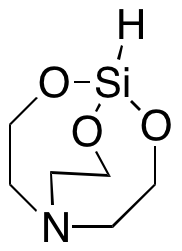
Silatrane
$176.81 Add to cart View Product DetailsMolecular Formula : C6 H13 N O3 Si
-

Silatrane
$1,391.21 Add to cart View Product DetailsMolecular Formula : C6 H13 N O3 Si
-

Sildenafil
$80.21 Add to cart View Product DetailsMolecular Formula : C22 H30 N6 O4 S
-

Sildenafil
$93.15 Add to cart View Product DetailsMolecular Formula : C22 H30 N6 O4 S
-

Sildenafil
$142.31 Add to cart View Product DetailsMolecular Formula : C22 H30 N6 O4 S
-

Sildenafil Citrate
$55.20 Add to cart View Product DetailsMolecular Formula : C22 H30 N6 O4 S . C6 H8 O7
-

Sildenafil Citrate
$114.71 Add to cart View Product DetailsMolecular Formula : C22 H30 N6 O4 S . C6 H8 O7
-

Sildenafil Citrate
$201.83 Add to cart View Product DetailsMolecular Formula : C22 H30 N6 O4 S . C6 H8 O7
-

Sildenafil Citrate-d3
$53.48 Add to cart View Product DetailsMolecular Formula : C22H27D3N6O4S • (C6H8O7)
-

Sildenafil Citrate-d3
$442.46 Add to cart View Product DetailsMolecular Formula : C22H27D3N6O4S • (C6H8O7)
-
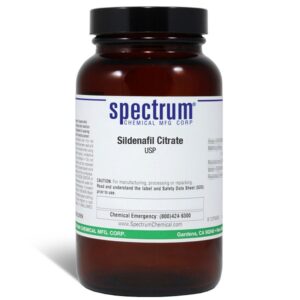
Sildenafil Citrate, USP
$371.02 Add to cart View Product DetailsSildenafil Citrate, USP
-
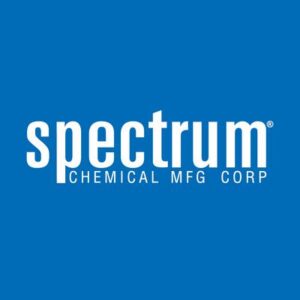
Sildenafil Citrate, USP
$1,686.22 Add to cart View Product DetailsSildenafil Citrate, USP
-
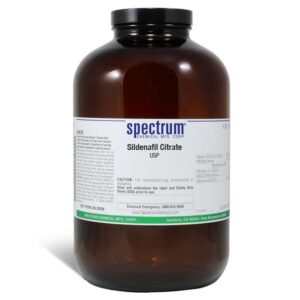
Sildenafil Citrate, USP
$2,499.47 Add to cart View Product DetailsSildenafil Citrate, USP
-

Sildenafil Dimer Impurity
$208.73 Add to cart View Product DetailsMolecular Formula : C38 H46 N10 O8 S2
-

Sildenafil Dimer Impurity
$1,636.16 Add to cart View Product DetailsMolecular Formula : C38 H46 N10 O8 S2
-

Sildenafil N-Oxide
$110.40 Add to cart View Product DetailsMolecular Formula : C22 H30 N6 O5 S
-

Sildenafil N-Oxide
$232.01 Add to cart View Product DetailsMolecular Formula : C22 H30 N6 O5 S
-

Sildenafil N-Oxide
$696.90 Add to cart View Product DetailsMolecular Formula : C22 H30 N6 O5 S
-

Sildenafil-d3
$139.73 Add to cart View Product DetailsMolecular Formula : C22 D3 H27 N6 O4 S
-

Sildenafil-d3
$238.91 Add to cart View Product DetailsMolecular Formula : C22 D3 H27 N6 O4 S
-

Sildenafil-d3
$521.81 Add to cart View Product DetailsMolecular Formula : C22 D3 H27 N6 O4 S
-

Sildenafil-d8
$201.83 Add to cart View Product DetailsMolecular Formula : C22 2H8 H22 N6 O4 S
-

Sildenafil-d8
$1,589.59 Add to cart View Product DetailsMolecular Formula : C22 2H8 H22 N6 O4 S
-
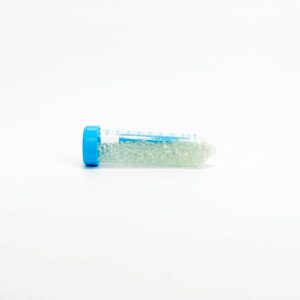
Silica beads, 5 mm
$42.11 Add to cart View Product Details50 mL conical tube containing 5 mm diameter glass beads for sample preparation
-
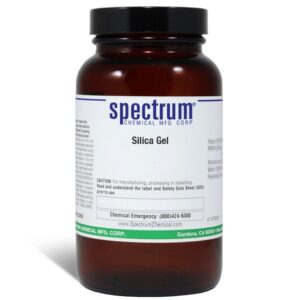
Silica Gel, 230-400 Mesh
$143.93 Add to cart View Product DetailsSilica Gel, 230-400 Mesh
-
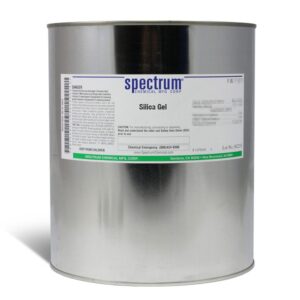
Silica Gel, 230-400 Mesh
$791.78 Add to cart View Product DetailsSilica Gel, 230-400 Mesh


